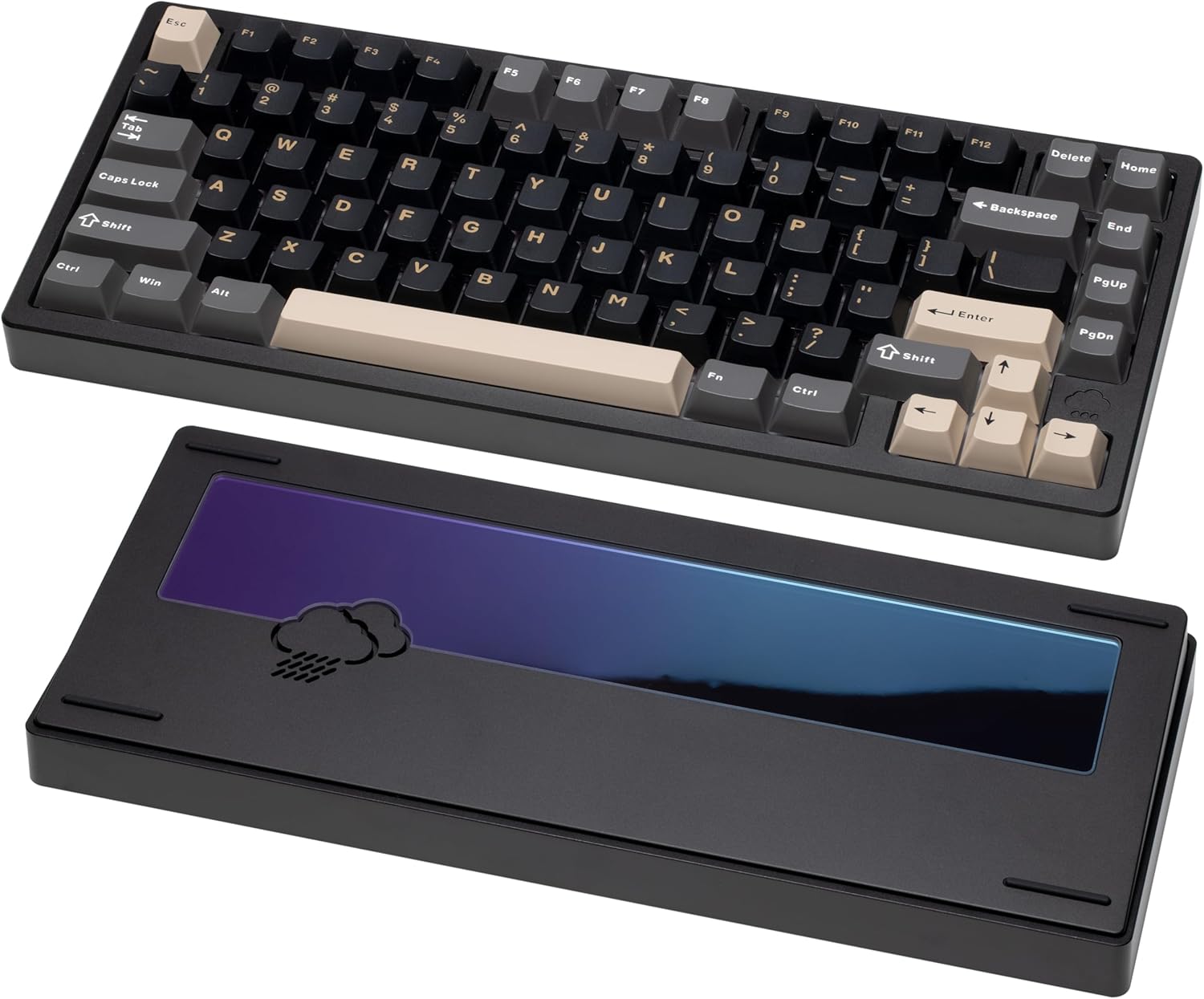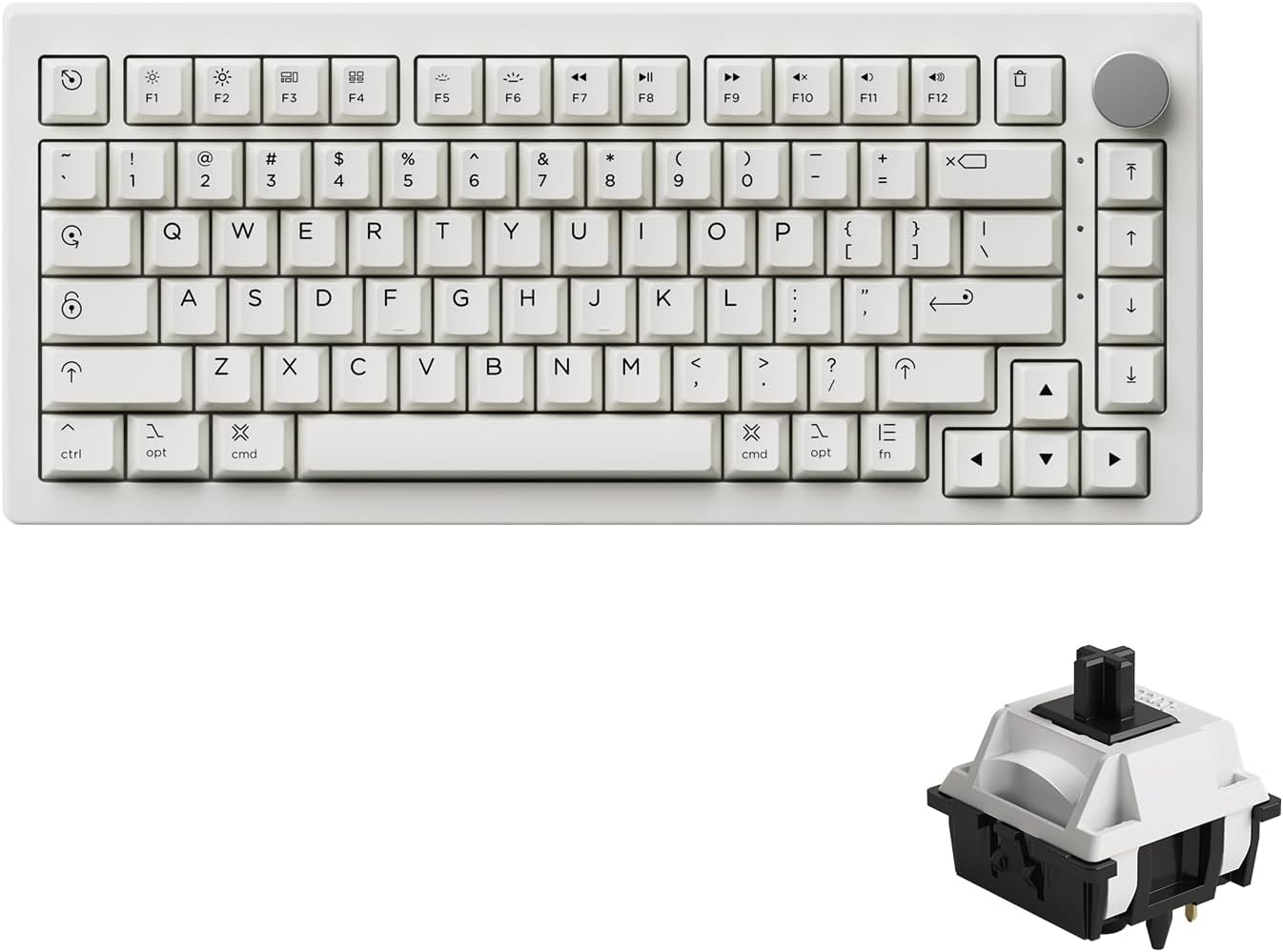Ultimate Guide to Mechanical Keyboard Layouts and Sizes
So, you're diving into the world of mechanical keyboards? Awesome! One of the first things you'll realize is that there's a lot of choice, especially when it comes to size and layout. It can be overwhelming, but don't worry, we're here to break it down. This guide will walk you through the most common mechanical keyboard layouts, helping you find the perfect fit for your needs and preferences. Let's get started!
Understanding Keyboard Layouts
Before we jump into specific sizes, let's clarify what we mean by "layout." This refers to the arrangement of keys on the keyboard. The most common layout is ANSI (American National Standards Institute), but you might also encounter ISO (International Organization for Standardization). The main difference lies in the shape and position of the Enter key and the presence of an extra key next to the left Shift key in ISO layouts. For most users in North America, ANSI is the standard.
Full-Size (100%) Keyboards
These are your classic, no-nonsense keyboards with all the keys you'd expect, including the number pad, function row, and arrow keys. They're great for users who need all the functionality at their fingertips, like accountants or data entry professionals.
- Pros: Full functionality, familiar layout.
- Cons: Large footprint, can be less ergonomic.
- Who it's for: Users who need a number pad and don't mind the extra desk space.
Tenkeyless (TKL) / 87% Keyboards
TKL keyboards chop off the number pad, making them more compact and ergonomic. Gamers often prefer TKL keyboards because they allow for more mouse space.
- Pros: More compact than full-size, better ergonomics for some.
- Cons: Lacks a number pad.
- Who it's for: Gamers, programmers, and anyone who wants a more compact setup.
75% Keyboards
75% keyboards take the TKL design and compress it even further. They typically retain the function row and arrow keys but squeeze them closer together, often removing the gap above the arrow keys. This layout offers a great balance between functionality and space-saving.
One excellent example of a 75% keyboard is the EPOMAKER EA75. This keyboard boasts tri-mode connectivity, a versatile rotary knob, and a smooth, quiet typing experience. It's hot-swappable, so you can easily change out the switches to find your perfect feel. The gasket-mounted design and sound dampening contribute to a premium typing experience.
 Check Price on Amazon
Check Price on Amazon
- Pros: Compact, retains essential keys, good balance of functionality and size.
- Cons: Can feel a bit cramped for users with larger hands.
- Who it's for: Users who want a compact keyboard without sacrificing too much functionality.
Another fantastic 75% option is the Keychron K2 HE. This keyboard takes performance to the next level with Hall-Effect Gateron magnetic switches, offering customizable actuation and ultra-fast response times. It's perfect for serious gamers and anyone who demands the best possible typing experience.
 Check Price on Amazon
Check Price on Amazon
65% Keyboards
65% keyboards are even more compact than 75% layouts. They typically remove the function row and often merge the arrow keys with the main keyboard area. Functionality is accessed through function layers.
- Pros: Very compact, great for portability.
- Cons: Requires learning function layers, less functionality than larger layouts.
- Who it's for: Users who prioritize portability and don't need dedicated function keys.
60% Keyboards
60% keyboards are the minimalist's dream. They strip away everything but the essential alphanumeric keys, modifiers, and arrow keys (sometimes accessible through function layers). These keyboards are incredibly compact and popular in the custom keyboard community.
- Pros: Extremely compact, maximum desk space.
- Cons: Steeper learning curve, heavy reliance on function layers.
- Who it's for: Minimalists, gamers who need maximum mouse space, and custom keyboard enthusiasts.
96% Keyboards
96% keyboards offer a unique approach: they pack all the keys of a full-size keyboard into a smaller footprint by eliminating most of the gaps between keys. This layout provides full functionality while saving space.
The AULA F99 is an excellent example of a 96% keyboard. It features tri-mode connectivity, a large battery, and a gasket-mounted structure for a comfortable and responsive typing experience. It's a great option for users who need a number pad but don't want a full-size keyboard.
 Check Price on Amazon
Check Price on Amazon
- Pros: Full functionality in a smaller footprint.
- Cons: Can feel cramped, takes some getting used to.
- Who it's for: Users who need a number pad but want to save space.
Other Layouts to Consider
- 40% Keyboards: These are ultra-compact keyboards that require extensive use of layers. They're not for the faint of heart but can be a fun challenge for keyboard enthusiasts.
- Ergonomic Keyboards: These keyboards are designed to promote a more natural hand and wrist position, reducing strain and improving comfort. They come in various layouts, including split and angled designs.
Hot-Swappable Keyboards
Regardless of the layout you choose, consider a hot-swappable keyboard. This feature allows you to easily change the switches without soldering, making it easy to experiment with different switch types and find your perfect feel. Both the EPOMAKER EA75, Keychron K2 HE, and AULA F99 mentioned above are hot-swappable.
Don't Forget About Aesthetics!
Keyboard layouts aren't just about functionality; they're also about aesthetics. Consider the overall look and feel of the keyboard and how it fits into your setup. The WOBKEY Rainy 75 is a great example of a keyboard that combines excellent functionality with a sleek, minimalist design. Its aluminum case, acoustic dampening, and gasket-mounted design provide a premium typing experience, while its tri-mode connectivity makes it adaptable to any setup.
 Check Price on Amazon
Check Price on Amazon
And if you are a Mac lover, the Akko 5075B Plus Air is a great option. This Mac-themed, 75% wireless mechanical keyboard featuring hot-swappable sockets and durable PBT dye-sub keycaps. It supports tri-mode connectivity (Bluetooth 5.0, 2.4GHz, and USB-C) and includes a programmable RGB backlight with per-key effects.
 Check Price on Amazon
Check Price on Amazon
Visual Aids and Demos
To further illustrate the differences between these layouts, consider searching for visual aids like keyboard layout comparison charts. Also, look for video demos on YouTube to see these keyboards in action and hear the sound of different switch types.
Finding the Right Keyboard for You
Choosing the right mechanical keyboard layout depends on your individual needs and preferences. Consider how you'll be using the keyboard, how much desk space you have, and what features are most important to you. Don't be afraid to experiment and try different layouts until you find the perfect fit.
Ready to take the plunge?
Now that you're armed with knowledge about mechanical keyboard layouts, why not explore the amazing options available? Whether you're after the compact efficiency of a 75% keyboard or the number-crunching power of a 96% layout, TryMechKeys.com has something for everyone. Click the links above to check the latest prices and find the mechanical keyboard of your dreams!
Have questions or want to share your favorite layout? Leave a comment below – we love hearing from our community!
Mechanical Keyboard Starter Guide
Ever wanted to learn about or build your own mechanical keyboard? This guide will show you everything you need to know.
Learn More